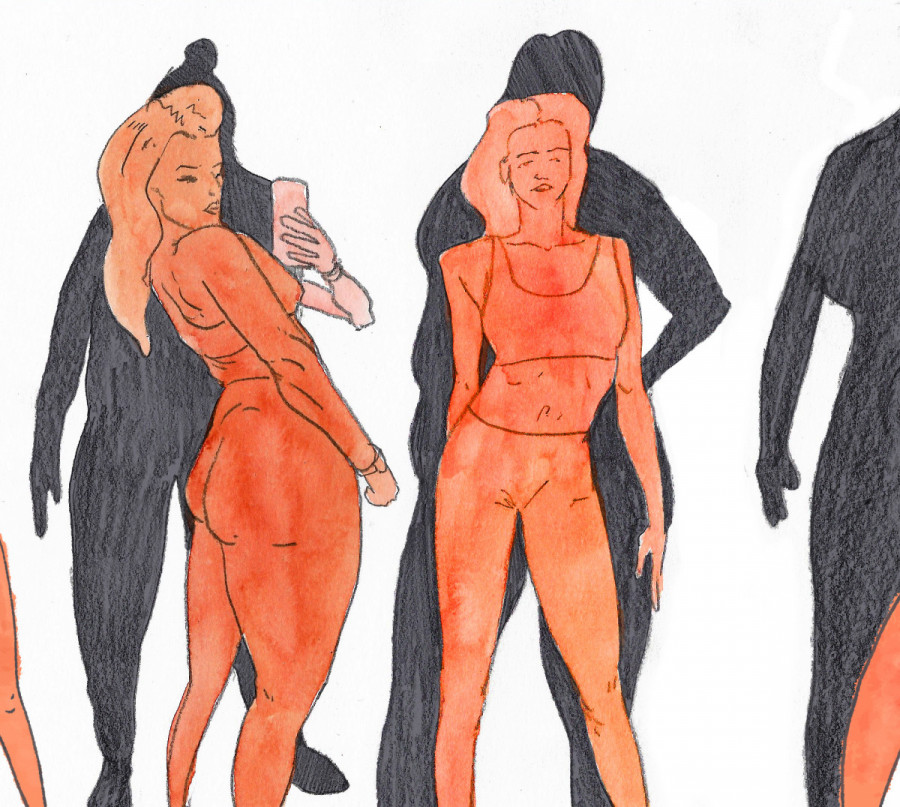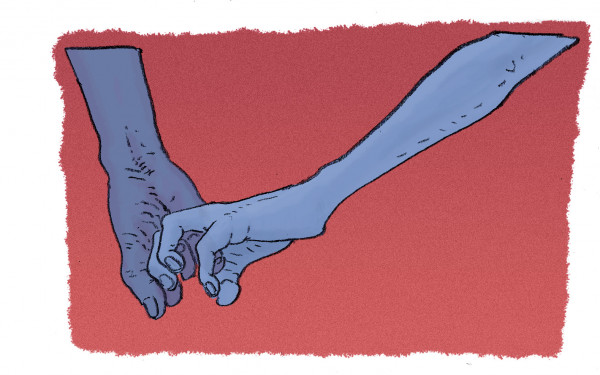Body positivity is dead and thin people killed it
Respectability, impracticality, and a lack of intersectionality have corrupted the body positivity movement
Originally a mainstay of the second and third-wave feminist movements, the pro-fat movement is functionally dead.
“We are angry at mistreatment by commercial and sexist interests. These have exploited our bodies as objects of ridicule, thereby creating an immensely profitable market selling the false promise of avoidance of, or relief from, that ridicule,” wrote activist Judy Freespirit, author of the Fat Liberation Manifesto, published in 1973.
The original goal of the fat liberation movement in the 1970s and ‘80s was to bring an end to the oppression experienced by fat people in social and political spheres through awareness, governmental changes in policy, and shifts in media culture.
Fat liberation, through changes in popular culture and beauty standards, has been rebranded over time as body positivity, but what are the primary differences between the two?
“Because body positivity is so deeply focused on internal, individual change, conversations about power, privilege, and oppression often don’t come naturally to self-proclaimed body positive people,” said fat activist and author Aubrey Gordon in her book What We Don’t Talk About When We Talk About Fat.
She argues that the difference between the two is that fat liberation is a justice movement focused on ending weight-based oppression, while body positivity is based on individual self-image.
The body positivity movement has now been fully declawed by those whom it was never meant to serve. It has been overrun by thin people, leaving fat people out of the conversation.
As of February 2022, there are over 9.5 million posts on Instagram using #BodyPositivity. #FatLiberation, on the other hand, has only been used in around 65,000 posts.
The oppression of fat people takes place because of fatphobia, and the original purpose of body positivity was to end it. Fatphobia is the disgust, dislike, mistreatment, or stigmatization of fat people based solely on their bodies.
The body positivity movement has now been fully declawed by those whom it was never meant to serve. It has been overrun by thin people, leaving fat people out of the conversation.
The effects of fatphobia can be wide and far-reaching. Everything from how a person is treated walking down the street to how they’re treated on the operating table is affected by anti-fat bias.
Fatphobia, especially in medical settings, can be dangerous. A 2019 study of Canadian physicians called Examining Weight Bias among Practicing Canadian Family Physicians found that around 1 in 4 doctors had an outright dislike and discomfort around obese patients. Nearly 1 in 5 Canadian doctors openly admitted to “feeling disgusted when treating a patient with obesity.”
Studies that have come out as early as the 1990s have found evidence of systemic fatphobia. A 1998 study by the American Medical Association called Body Weight and Health Care Among Women in the General Population looked at the correlations between women’s body mass index and their usage of preventative medical services.
Lackluster communication, feelings of judgment, and lack of rigour in diagnosing symptoms were all factors in the deterioration of doctor-patient relationships for fat women. The researchers found that women with a higher BMI were much less likely to go to their doctor because of this blatant lack of care, potentially worsening their health outcomes.
Body positivity turns a blind eye to the violence of systemic fatphobia. Instead, thin proponents of the movement hollow it out to calm their insecurities. As Gordon explains, “[w]hen fat activists talk about body-based oppression, thinner body positivity activists paint it over, replacing it with a more palatable insecurity. But when we don’t talk about body-based oppression, we’re strangely lauded for our confidence.”
Body positivity is not rooted in undoing oppression; it is less effective. Because its original purpose is nullified, it has been deradicalized and declawed. The process of declawing actually has another name: respectability politics, which Black feminist academic Evelyn Higginbotham, author of Righteous Discontent: The Women’s Movement in the Black Baptist Church, described in the following way:
“The politics of respectability emphasized reform of individual behavior and attitudes both as a goal in itself and as a strategy for reform of the entire structural system […] If respectability signified dialogue with oneself and with others, it also signified class and status differentiation between those who exhibited its definitional criteria and those who did not.”
The argument she presented was that when marginalized people are too outspoken or too loud about their oppression, they are ostracized and told to silence themselves. By not being vocal on oppression, staying in one’s place, and not complaining, one becomes respectable to the majority, Higginbotham argued.
The modern body positivity movement is coated in layers of white liberal feminist ideology, praising individuals’ confidence and comfort instead of focusing on dismantling systems of oppression that have always hurt fat Women of Colour the most.
The core of her work as an academic and author is on Black women’s issues. Black women, especially activists such as Johnnie Tillmon, held a very important place in the Fat Liberation movement decades ago, but have now largely been drowned out in a sea of mid-sized white women who speak over them.
Intersecting issues of fatness and race, however, are even older than the ‘70s—they go back centuries. In her book Fearing the Black Body: The Racial Origins of Fat Phobia, sociologist Sabrina Strings explains how racial and fat noncompliance intersect:
“Since the height of the slave trade and the growth of Protestantism, Black women had been symbols of “savage” aesthetic inclinations and amoral appetites. […] The association between fatness and Black femininity […] reemerged. Yet again, Black women were to become the focus of fear, anxiety, and degradation over the size of their bodies.”
The modern body positivity movement is coated in layers of white liberal feminist ideology, praising individuals’ confidence and comfort instead of focusing on dismantling systems of oppression that have always hurt fat Women of Colour the most.
The transformation of the body positivity movement has also occurred to fit the trending aesthetic needs of a white liberal consumer base. Similarly, this white consumer-based process has also been done to the features of Black women and Afro-Latinas. White women, due to evolving beauty standards in the past decade, have increased the demand for a certain slim thick look.
While the aesthetic can be characterized by a small waist and flat stomach, it also includes large breasts, hips, and ass. These are all characteristics for which–as Strings pointed out in her book–WOC were demonized for centuries, but have now been appropriated.
According to a 2021 study, the global sum of money thrown into the weight loss industry is over $250 billion annually and growing. Weight is still incredibly stigmatized, no matter what is decreed by the proponents of the modern body positivity movement under the faulty veneer of inclusion.
What was once a revolutionary path for marginalized bodies has now become a shallow movement based on gratifying egos and ignoring fatphobia. “You’re not fat, you’re beautiful,” we tell ourselves, only deepening the problem without even noticing the ugliness we’ve spoken into the world.
This article originally appeared in The Body Issue, published February 1, 2022.


_600_832_s.png)



_600_375_90_s_c1.jpeg)
